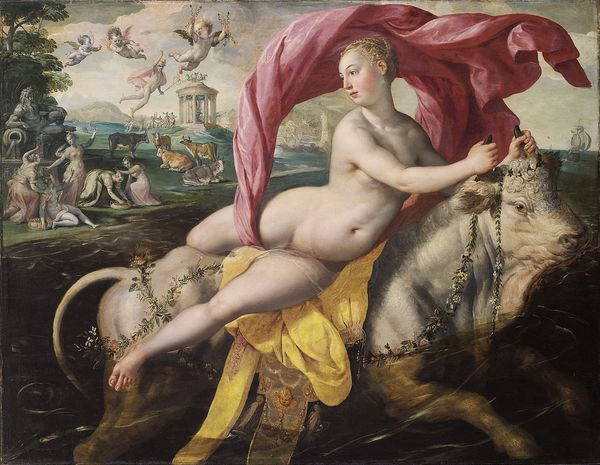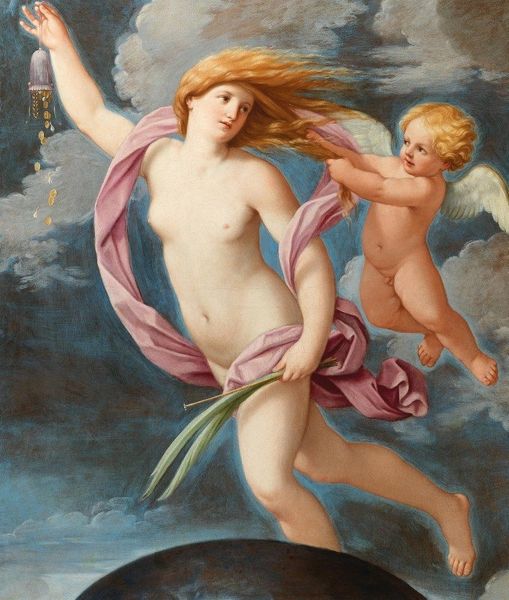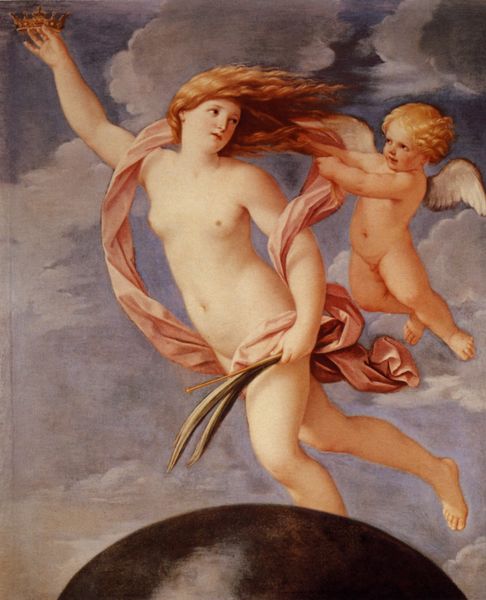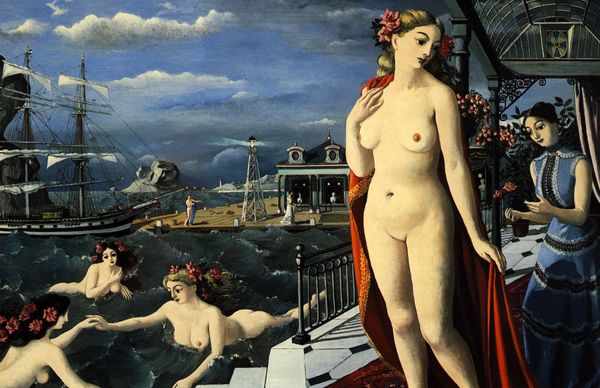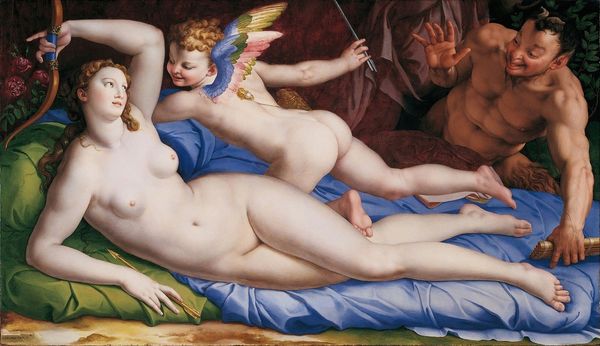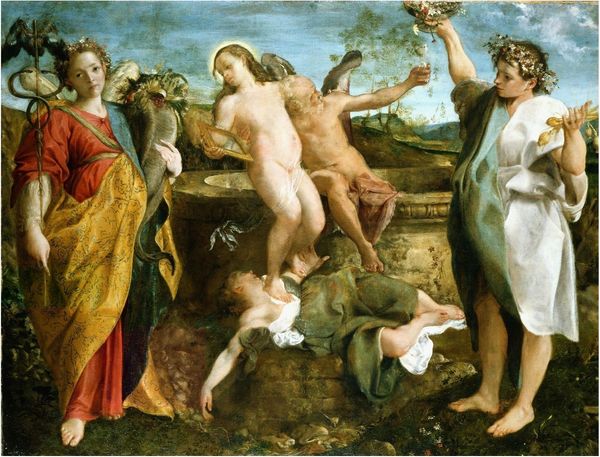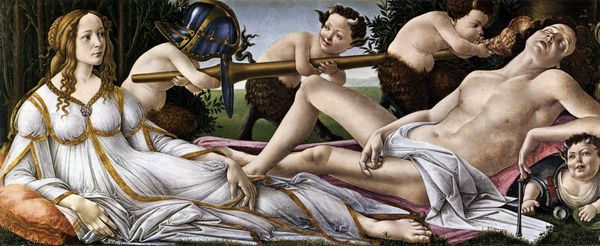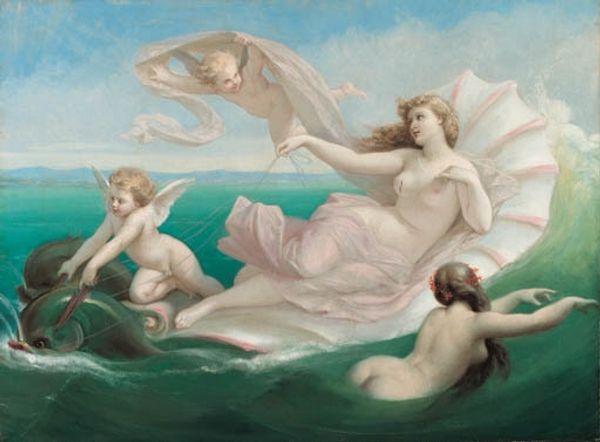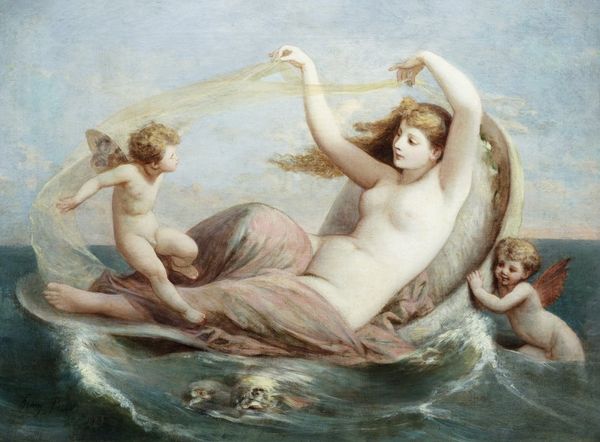
painting, oil-paint
#
allegory
#
painting
#
oil-paint
#
landscape
#
figuration
#
oil painting
#
mythology
#
italian-renaissance
#
nude
#
early-renaissance
Copyright: Public Domain: Artvee
You probably know that this tempera painting is titled the ‘Birth of Venus’. But it doesn’t look much like a typical birth scene, right? Let’s explore! The Florentine artist Sandro Botticelli (1445-1510) painted ‘Birth of Venus’ around 1485. It was probably commissioned by Lorenzo di Medici (the orange trees in the background are a symbol of the Medicis), and now stands as one of the most celebrated painters of the Early Renaissance. It embodies Renaissance humanism. This painting depicts Venus, the Goddess of Love, arriving at the shore of Cyprus. According to mythology, Venus was born from sea foam and then blown onto land by Zephyr (the western wind). We see Zephyr on the left side of the painting, holding the nymph Chloris. He is represented as a brown-haired male with powerful wings and a grey robe which ripples in the breeze. Venus stands gracefully atop a white scallop shell. She seems serene and graceful – undisturbed by the aggressive wind. She is completely nude, with pale skin that resembles a classical marble sculpture. She gazes out towards us, covering her body with her flowing hair and hands. Botticelli used actual gold to paint the hair! The figure of Venus is believed to be modelled on Simonetta Cattaneo Vespucci. Vespucci was a Florentine noblewoman admired for her great beauty. Yet she died young. A devastated Botticelli even wrote that he wished to be buried at her feet. On the right side of the painting, we see another female figure in a white floral dress. She shares the same long hair as Venus. In her outstretched arm, she holds a piece of pink floral fabric which she prepares to wrap around Venus. Scholars are undecided as to whether this figure represents Flora, the goddess of spring, or a Horai, one of the goddesses of the seasons. This iconic painting is now renowned for its perfect beauty. How do you think the legacy of Venus’s idealised beauty lives on today?
